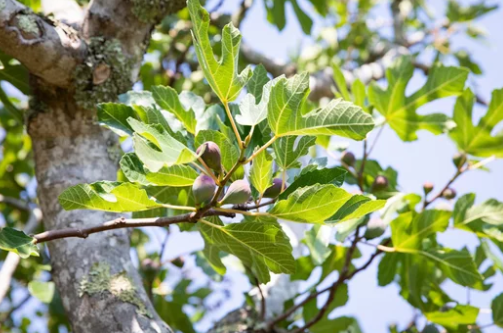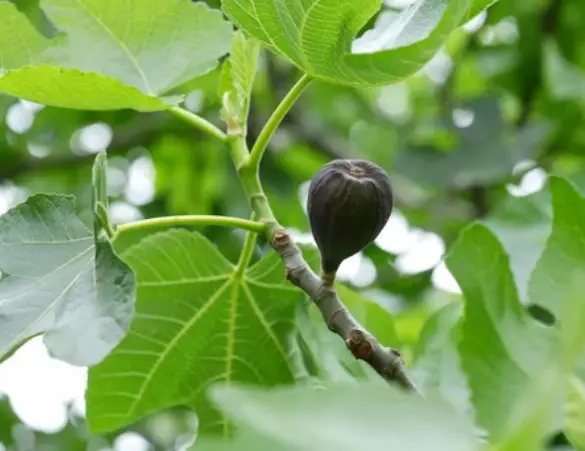Fig trees are among the oldest and most fascinating trees on the planet. Their history dates back to ancient times when they played a significant role in the agricultural and cultural practices of many civilizations. Today, these trees are still highly prized for their delicious fruits and ornamental value. But there is another aspect of fig trees that often goes unnoticed – their spectacular flowering.
When Do Fig Trees Flower?

Fig trees are unique in that they do not produce flowers in the traditional sense. Instead, they have a unique structure known as the syconium, which contains both male and female flowers inside. The syconium is actually a type of specialized inverted inflorescence, meaning that the flowers are located inside the fruit itself.
The flowering season for fig trees varies depending on the variety, location, and climate. In general, fig trees flower in late spring to early summer, typically around May or June. During this time, the trees produce numerous small, greenish-yellow flowers that are barely visible to the naked eye.
The Life Cycle of Fig Tree Flowers
The flowers of a fig tree are incredibly unique and have a fascinating life cycle. When a fig tree produces flowers, it actually produces two types: male and female flowers. The male flowers are responsible for producing the pollen, while the female flowers are responsible for producing the fig fruit.
The male flowers produce pollen that is carried by insects, such as wasps and bees, to the female flowers. These insects enter the syconium through a tiny opening in the top called the ostiole. Once inside, they pollinate the female flowers and lay their eggs. The pollinated flowers then develop into the fig fruit we all know and love.
The fig fruit is not actually a fruit at all but is instead a specialized structure known as a syncarp. The syncarp is formed from the fusion of multiple flowers, which develop into a fleshy, sweet-tasting fruit with numerous seeds inside. The seeds are actually the fruit’s true fruits, while the fleshy part is an enlarged stem tissue.
Why Fig Tree Flowering is Important
While the flowering of fig trees may seem like a small event, it is actually crucial for the survival of the tree and the continuation of its species. Without pollination, the female flowers would not develop into the fig fruit, and the tree would not be able to reproduce.
Furthermore, fig trees have a unique relationship with wasps, which are essential for the pollination of flowers. The wasps lay their eggs inside the syconium, and in return, they help pollinate the flowers. This relationship is so crucial that without wasps, many fig tree species would go extinct.
Also, the ecological importance of fig tree flowering is also a stunning display of nature’s beauty. The tiny, barely visible flowers transform into sweet, succulent fruits that are a delight to eat. And if you’re lucky enough to witness a fig tree in full bloom, you’ll be treated to a spectacle of nature that is truly unforgettable.
How do I Know if my Fig Tree Will Fruit?
If you have a fig tree in your garden, you may be eagerly anticipating the sweet and succulent fruits it will produce. However, not all fig trees will fruit, and there are several factors that can affect fruiting. Here are some things to consider to determine if your fig tree will produce fruit:
- Age of the Tree: Fig trees typically take between 3 to 5 years to reach maturity and produce fruit. If your tree is still young, it may not be ready to produce fruit yet. However, once your tree reaches maturity, it should produce fruit each year.
- Growing Conditions: The growing conditions of your fig tree can also affect fruit production. Fig trees prefer warm, sunny locations with well-drained soil. If your tree is not receiving enough sunlight or is in soil that is too wet, it may not produce fruit.
- Pruning: Pruning is important for fig trees to encourage new growth and fruit production. If your tree has not been pruned in a while, it may need to be pruned to encourage fruit production.
- Variety of Fig Trees: There are many different varieties of fig trees, and some are more prone to fruiting than others. Some varieties produce two crops a year, while others only produce one. It’s important to research the specific variety of your fig tree to determine its fruiting habits.
- Winter Protection Fig trees are generally hardy, but in colder climates, they may require winter protection to prevent damage to the tree and fruit production. Covering the tree with burlap or mulch can help protect it during the winter months.
Conclusion
Fig tree flowering may seem like a small and insignificant event, but it is actually a crucial part of the tree’s life cycle and an important ecological process. From the tiny flowers to the succulent fruit, the fig tree is a true wonder of nature. So, the next time you bite into a delicious fig or admire a fig tree’s ornamental beauty, take a moment to appreciate the wonder of fig tree flowering.




